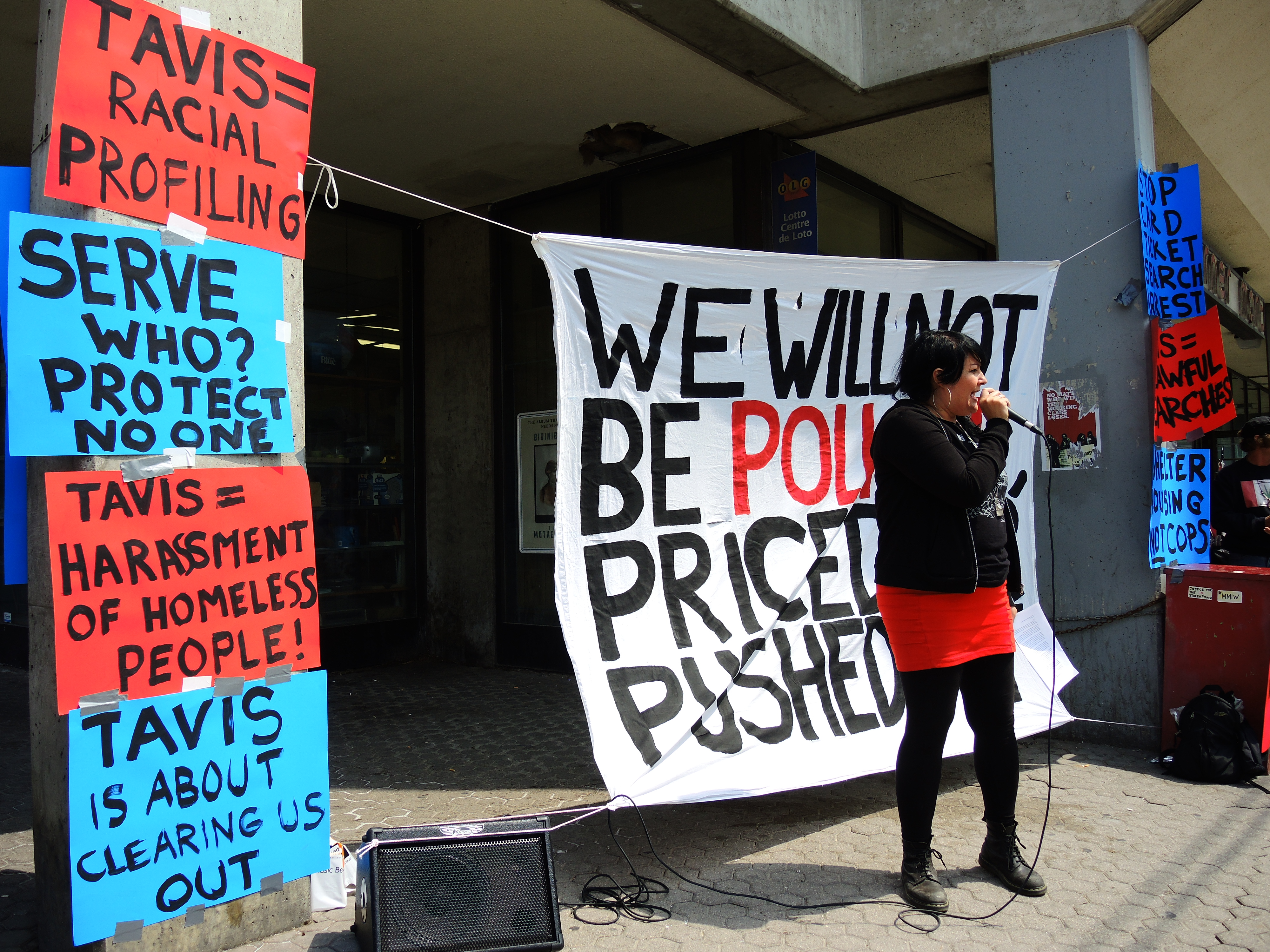For more than 25 years, Frank Coburn has lived in the Dundas and Sherbourne neighbourhood of Toronto’s Downtown Eastside (DTES).
“I know almost every tile in this area,” said Coburn. “I know what kind of people live here. I know what the issues are.”
The disparity between rich and poor is beyond belief. People driving luxury vehicles and living in houses and condominiums approaching the million-dollar mark or more live almost side by side with a significant marginalized population including homeless men and women, drug users and those living in social housing.
Yet rarely do they interact with each other in a meaningful way.
“I’m not sure exactly what the agenda of TAVIS is in coming to an area like this and maybe we could find time for them to explain why they come here,” said Coburn at a press conference held by the Ontario Coalition Against Poverty (OCAP) late Monday morning on the northeast corner of Dundas and Sherbourne.
Toronto Anti-Violence Intervention Strategy (TAVIS) is led by the Toronto Police Service (TPS).
“TAVIS rolls out in three phases,” said the TPS on their website.
“Additional Toronto Police Service officers are assigned to areas experiencing an increase in violent activity. Once the neighbourhood is safe, ‘maintenance-level’ enforcement continues with increased police/city community member collaboration. An essential part of TAVIS is engagement with community members. It becomes the support system necessary to deal more effectively with the root causes of crime.”
TAVIS will be coming to Toronto’s DTES between June 16 and September 8 with an additional 30 officers patrolling the area from Wellesley south to Queen, and from Church east to Parliament.
OCAP alleged that studies show that initiatives like TAVIS result in increased police violence, racial profiling, harassment, search and seizures and unnecessary ticketing of poor people.
And one OCAP organizer alleged that their community was never consulted about the latest TAVIS initiative. She said only neighbourhood middle- and upper-income residents as well as the local Business Improvement Association exchanged views with police.
“I’m not sure if it’s a further extension of the war against drugs or not,” said Coburn, a member of the Toronto Harm Reduction Alliance and a drug user.
“But I do know that the war against drugs is a war against people. The only ones who benefit are the police and organized crime.”
Instead, Coburn would like to see “more people in the area who understand what the area is all about, people with compassion who want to treat people as human beings.”
As the neighbourhood become more gentrified, Coburn said newcomers want to impose their values on those who’ve lived in the DTES for decades.
“Their values may be different,” he said.
“But they are not better than ours. And what we need is housing. In particular harm reduction housing where people like myself can use drugs in the safety and comfort of their own homes.”
Without being a “burden” or “infringing on the rights” of anybody else.
“We need services, not policing,” said Vicky McPhee, executive director, Rights Watch Network. “We need protection for the sex workers in this community who are at risk every day of losing their lives. We need to make sure that there are cares and protections in place for all the vulnerable people in this community.”
For Aboriginal women like Sigrid, a long-time member of the community who lives in a First Nations rooming house while she waits for permanent housing. But that wait could last an eternity as developers are quick to snap up land in the DTES to build luxury condominiums and townhouses.
“We are being pushed out and I don’t know where they expect us to go,” said Sigrid.
“(Rich) people want to live down here. They think it’s very trendy and they think it’s really cool to live amongst people who are marginalized.”
Ignoring the long history that working-class and poor people have living in the DTES. Ignoring their suffering. Ignoring their needs.
“When you refuse to address their poverty,” said community activist Gaetan Heroux who’s worked in the neighbourhood for more than two decades.
“When you refuse to build housing. When you refuse to make sure they have enough income to live on.”
In the summer of 2006, six months after TAVIS was introduced, Heroux was working at the 519 Church Street Community Centre. When a woman approached him who wanted her identification replaced, she recalled how she’d been ticketed repeatedly by police.
“And she began to take tickets out of her purse,” said Heroux.
“She took out 27 tickets that she had received in the space of about four or five months for loitering, encumbering a sidewalk or littering. Over two thousand dollars worth of tickets. And this was a poor woman who lived in the north end and once she got her welfare cheque she was broke and she had to come down here to beg.”
Unfortunately, Heroux lost track of track of that woman. But there are many others with similar stories.
“The sweep goes on until September 8,” said Zoe Dodd, an OCAP member and a member of the Toronto Harm Reduction Alliance.
“We hope politicians change their minds and put an end to it (sooner). And we hope to force them to do so.”




